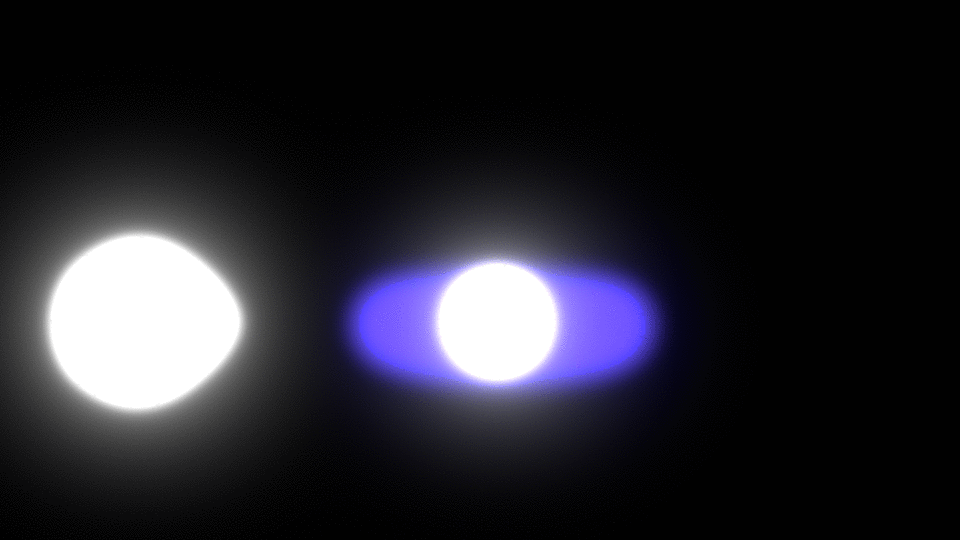|
RZ Pyxidis
RZ Pyxidis is eclipsing binary system in the constellation Pyxis, made up of two young stars less than two millions years old. Both are hot blue-white stars of spectral type B7V and are around 2.5 times the size of the Sun. One is around five times as luminous as the sun and the other around four times as luminous. The system is classified as a Beta Lyrae variable Beta Lyrae variables are a class of close binary stars. Their total brightness is variable star, variable because the two component stars orbit each other, and in this orbit one component periodically passes in front of the other one, thereby bloc ..., the apparent magnitude ranging from 8.83 to 9.72 over 0.66 days. References Pyxis Beta Lyrae variables B-type main-sequence stars Durchmusterung objects 075920 043541 Pyxidis, RZ {{var-star-stub ... [...More Info...] [...Related Items...] OR: [Wikipedia] [Google] [Baidu] |
Light Curve
In astronomy, a light curve is a graph (discrete mathematics), graph of the Radiance, light intensity of a celestial object or region as a function of time, typically with the magnitude (astronomy), magnitude of light received on the ''y''-axis and with time on the ''x''-axis. The light is usually in a particular frequency interval or frequency band, band. Light curves can be periodic, as in the case of eclipsing binary, eclipsing binaries, Cepheid variables, other periodic variables, and Methods of detecting extrasolar planets#Transit photometry, transiting extrasolar planets; or aperiodic, like the light curve of a nova, cataclysmic variable star, supernova, gravitational microlensing, microlensing event, or binary as observed during occultation events. The study of a light curve and other observations can yield considerable information about the physical process that produces such a light curve, or constrain the physical theories about it. Variable stars Graphs of the ap ... [...More Info...] [...Related Items...] OR: [Wikipedia] [Google] [Baidu] |
Hipparcos
''Hipparcos'' was a scientific satellite of the European Space Agency (ESA), launched in 1989 and operated until 1993. It was the first space experiment devoted to precision astrometry, the accurate measurement of the positions and distances of celestial objects on the sky. This permitted the first high-precision measurements of the intrinsic brightnesses, proper motions, and parallaxes of stars, enabling better calculations of their distance and tangential velocity. When combined with radial velocity measurements from spectroscopy, astrophysicists were able to finally measure all six quantities needed to determine the motion of stars. The resulting ''Hipparcos Catalogue'', a high-precision catalogue of more than 118,200 stars, was published in 1997. The lower-precision ''Tycho Catalogue'' of more than a million stars was published at the same time, while the enhanced Tycho-2 Catalogue of 2.5 million stars was published in 2000. ''Hipparcos'' follow-up mission, '' Gaia'', was ... [...More Info...] [...Related Items...] OR: [Wikipedia] [Google] [Baidu] |
Pyxis
Pyxis is a small and faint constellation in the southern sky. Abbreviated from Pyxis Nautica, its name is Latin for a mariner's compass (contrasting with Circinus, which represents a draftsman's compasses). Pyxis was introduced by Nicolas-Louis de Lacaille in the 18th century, and is counted among the 88 modern constellations. The Galactic plane, plane of the Milky Way passes through Pyxis. A faint constellation, its three brightest stars—Alpha Pyxidis, Alpha, Beta Pyxidis, Beta and Gamma Pyxidis—are in a rough line. At magnitude 3.68, Alpha is the constellation's brightest star. It is a blue-white star approximately distant and around 22,000 times as luminosity, luminous as the Sun. Pyxis is located close to the stars that formed the old constellation Argo Navis, the ship of Jason and the Argonauts. Parts of Argo Navis were the Carina (the keel or hull), the Puppis (the stern), and the Vela (the sails). These eventually became their own constellations. In the 19th century ... [...More Info...] [...Related Items...] OR: [Wikipedia] [Google] [Baidu] |
Beta Lyrae Variable
Beta Lyrae variables are a class of close binary stars. Their total brightness is variable star, variable because the two component stars orbit each other, and in this orbit one component periodically passes in front of the other one, thereby blocking its light. The two component stars of Beta Lyrae systems are quite heavy (several solar masses () each) and extended (Giant star, giants or supergiants). They are so close, that their shapes are heavily distorted by mutual gravitation forces: the stars have ellipsoidal shapes, and there are extensive mass flows from one component to the other. Mass flows These mass flows occur because one of the stars, in the course of its stellar evolution, evolution, has become a giant or supergiant. Such extended stars easily lose mass, just because they are so large: gravitation at their surface is weak, so gas easily escapes (the so-called stellar wind). In close binary systems such as beta Lyrae systems, a second effect reinforces this mass lo ... [...More Info...] [...Related Items...] OR: [Wikipedia] [Google] [Baidu] |
Durchmusterung
In astronomy, Durchmusterung or Bonner Durchmusterung (BD) is an astrometric star catalogue of the whole sky, published by the Bonn Observatory in Germany from 1859 to 1863, with an extension published in Bonn in 1886. The name comes from ('run-through examination'), a German word used for a systematic survey of objects or data. The term has sometimes been used for other astronomical surveys, including not only stars, but also the search for other celestial objects. Special tasks include celestial scanning in electromagnetic wavelengths shorter or longer than visible light waves. Original catalog The Bonner Durchmusterung (abbreviated BD), was initiated by Friedrich Argelander and using observations largely carried out by his assistants, which resulted in a catalogue of the positions and apparent magnitudes of 342,198 stars down to approximate apparent magnitude 9.5 and covering the sky from 90°N to 2°S declination. The catalogue, published in three parts, was accompanied by c ... [...More Info...] [...Related Items...] OR: [Wikipedia] [Google] [Baidu] |
Henry Draper Catalogue
The ''Henry Draper Catalogue'' (HD) is an astronomical star catalogue published between 1918 and 1924, giving spectroscopic classifications for 225,300 stars; it was later expanded by the ''Henry Draper Extension'' (HDE), published between 1925 and 1936, which gave classifications for 46,850 more stars, and by the ''Henry Draper Extension Charts'' (HDEC), published from 1937 to 1949 in the form of charts, which gave classifications for 86,933 more stars. In all, 359,083 stars were classified as of August 2017. The HD catalogue is named after Henry Draper, an amateur astronomer, and covers the entire sky almost completely down to an apparent photographic magnitude of about 9; the extensions added fainter stars in certain areas of the sky. The construction of the ''Henry Draper Catalogue'' was part of a pioneering effort to classify stellar spectra, and its catalogue numbers are commonly used as a way of identifying stars. History The origin of the ''Henry Draper Catalogue'' d ... [...More Info...] [...Related Items...] OR: [Wikipedia] [Google] [Baidu] |
Hipparcos Catalogue
''Hipparcos'' was a scientific satellite of the European Space Agency (ESA), launched in 1989 and operated until 1993. It was the first space experiment devoted to precision astrometry, the accurate measurement of the positions and distances of celestial objects on the sky. This permitted the first high-precision measurements of the luminosity, intrinsic brightnesses, proper motions, and parallaxes of stars, enabling better calculations of their distance and tangential velocity. When combined with radial velocity measurements from spectroscopy, astrophysicists were able to finally measure all six quantities needed to determine the motion of stars. The resulting ''Hipparcos Catalogue'', a high-precision catalogue of more than 118,200 stars, was published in 1997. The lower-precision ''Tycho Catalogue'' of more than a million stars was published at the same time, while the enhanced Tycho-2 Catalogue of 2.5 million stars was published in 2000. ''Hipparcos'' follow-up mission, ''Gaia ... [...More Info...] [...Related Items...] OR: [Wikipedia] [Google] [Baidu] |
Smithsonian Astrophysical Observatory Star Catalog
The Smithsonian Astrophysical Observatory Star Catalog is an astrometric star catalogue, created by Smithsonian Institution, a research institute. It was published by the Smithsonian Astrophysical Observatory in 1966 and contains 258,997 stars. The catalogue was compiled from various previous astrometric catalogues, and contains only stars to about ninth magnitude for which accurate proper motions were known. Names in the SAO catalogue start with the letters SAO, followed by a number. The numbers are assigned following 18 ten-degree bands of declination, with stars sorted by right ascension within each band. Online version of the SAO Catalog was created by the HEASARC in March 2001 based on ADC/CDS Catalog I/131A, which itself is originally derived from a character-coded machine-readable version of the Smithsonian Astrophysical Observatory Star Catalog (SAO, SAO Staff 1966) prepared by T.A. Nagy in 1979, and subsequently modified over the next decade or so. Examples of S ... [...More Info...] [...Related Items...] OR: [Wikipedia] [Google] [Baidu] |
Monthly Notices Of The Royal Astronomical Society
''Monthly Notices of the Royal Astronomical Society'' (MNRAS) is a peer-reviewed scientific journal in astronomy, astrophysics and related fields. It publishes original research in two formats: papers (of any length) and letters (limited to five pages). MNRAS publishes more articles per year than any other astronomy journal. The learned society journal has been in continuous existence since 1827 and became online only in 2020. It operates as a partnership between the Royal Astronomical Society (RAS), who select and peer-review the contents, and Oxford University Press (OUP), who publish and market the journal. Despite its name, MNRAS is no longer monthly, nor does it carry the notices of the RAS. In 2024 MNRAS became a purely gold open access journal. History The first issue of MNRAS was published on 9 February 1827 as ''Monthly Notices of the Astronomical Society of London'' and it has been in continuous publication ever since. It took its current name from the second vo ... [...More Info...] [...Related Items...] OR: [Wikipedia] [Google] [Baidu] |
American Association Of Variable Star Observers
The American Association of Variable Star Observers (AAVSO) is an international nonprofit organization. Founded in 1911, the organization focuses on coordinating, analyzing, publishing, and archiving variable star observations made largely by amateur astronomers. The AAVSO creates records that establish light curves depicting the variation in brightness of a star over time. The AAVSO makes these records available to professional astronomers, researchers, and educators. Professional astronomers do not have the resources to monitor every variable star. Hence, astronomy is one of the few sciences where amateurs can make significant contributions to research. In 2011, the 100th year of the AAVSO's existence, the twenty-millionth variable star observation was received into their database. The AAVSO International Database (AID) has stored over thirty-five million observations as of 2019. The organization receives nearly 1,000,000 observations annually from an estimated amount of 2,00 ... [...More Info...] [...Related Items...] OR: [Wikipedia] [Google] [Baidu] |
Beta Lyrae Variables
Beta Lyrae variables are a class of close binary stars. Their total brightness is variable because the two component stars orbit each other, and in this orbit one component periodically passes in front of the other one, thereby blocking its light. The two component stars of Beta Lyrae systems are quite heavy (several solar masses () each) and extended (giants or supergiants). They are so close, that their shapes are heavily distorted by mutual gravitation forces: the stars have ellipsoidal shapes, and there are extensive mass flows from one component to the other. Mass flows These mass flows occur because one of the stars, in the course of its evolution, has become a giant or supergiant. Such extended stars easily lose mass, just because they are so large: gravitation at their surface is weak, so gas easily escapes (the so-called stellar wind). In close binary systems such as beta Lyrae systems, a second effect reinforces this mass loss: when a giant star swells, it may reach it ... [...More Info...] [...Related Items...] OR: [Wikipedia] [Google] [Baidu] |





